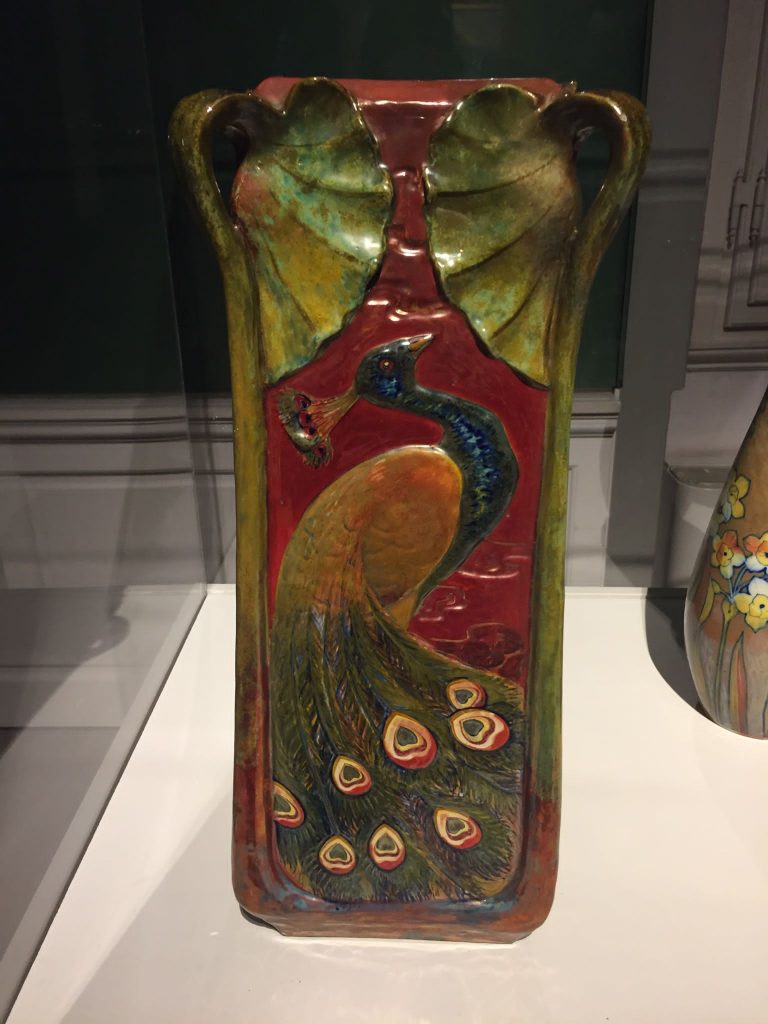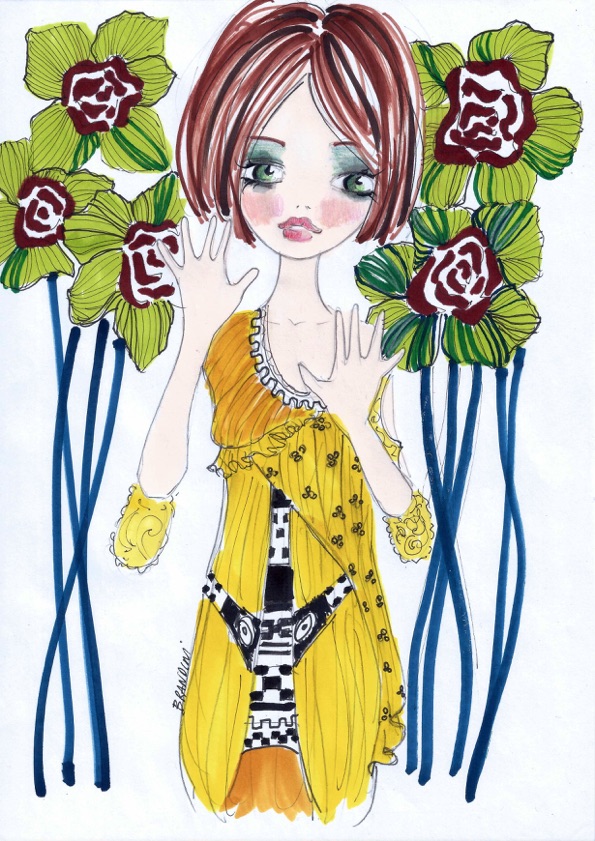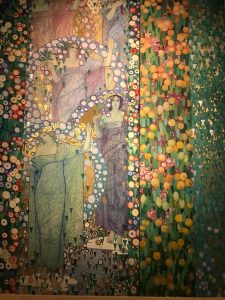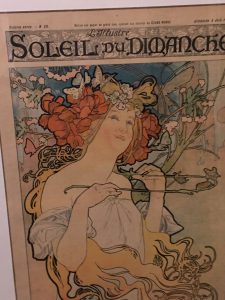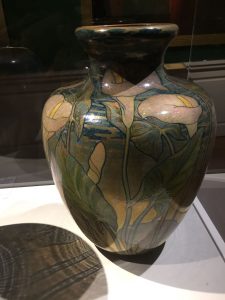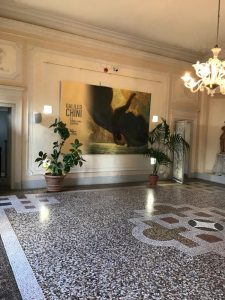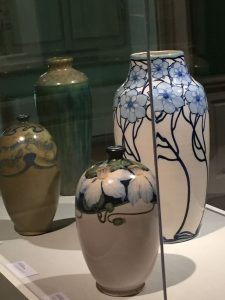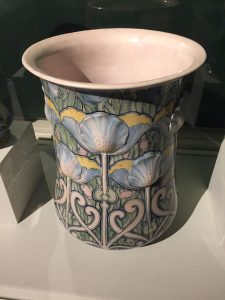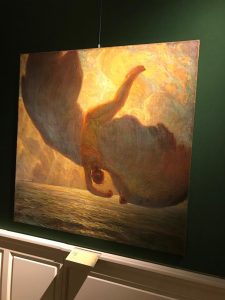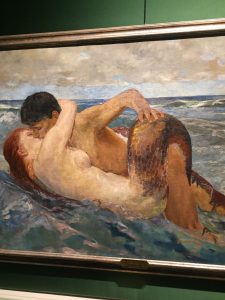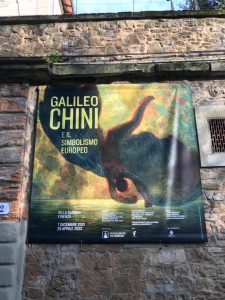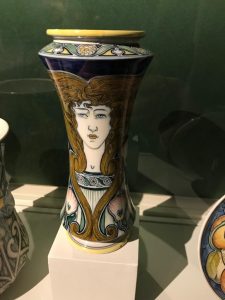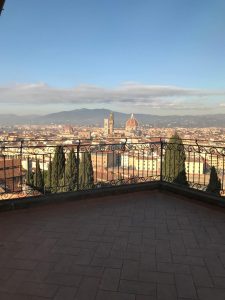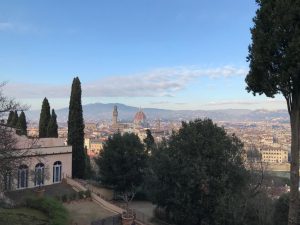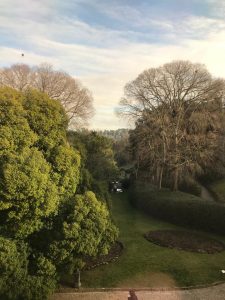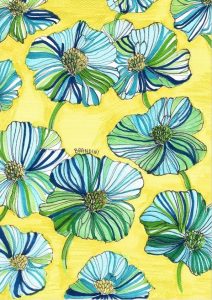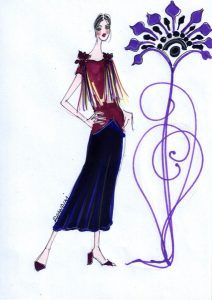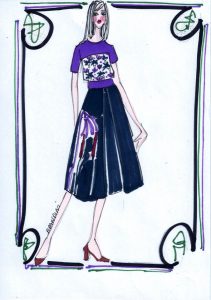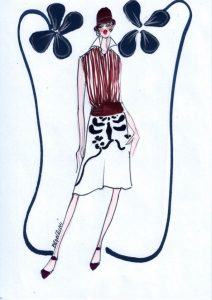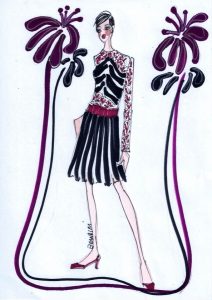Ceramic vase by Galileo Chini
“Isotta” by Beatrice Brandini
At Villa Bardini 200 pieces including paintings, illustrations and ceramics by the greatest Italian exponent of Liberty and Symbolism: Galileo Chini.
“Classical Spring”, 1914, by Galileo Chini
The exhibition, curated by Fabio Benzi, promoted by the CR Firenze Foundation and the Bardini and Peyron Monumental Parks Foundation, also highlights the reopening of the interior spaces of the Villa which were closed due to the pandemic. An important sign to be rewarded by visiting it.
Soleil Manifesto, Galileo Chini
Ceramic vase by Galileo Chini
Florentine painter and ceramist, also famous outside Italy, esteemed by artists such as Umberto Boccioni, he participated in important international exhibitions such as those in Turin, Paris, Brussels, St. Petersburg, etc .; Chini was one of the first artists to break down the barriers between major and minor art, being an extraordinary ceramist whose works are among the most significant examples of Art Nouveau.
Villa Bardini internal hall
Ceramic vases by Galileo Chini
The figure of him is practically unique in the panorama of Italian art between the nineteenth and twentieth centuries. A complex personality who tried his hand in an extraordinary way in every aspect of art. He was in fact a great decorator, but also ceramist, illustrator (his manifesto “The Art of Ceramics”, reproduced in the pages of the Biennale catalog in 1901, or those for the “Cena delle beffe”, for the Ethnographic of Rome), scenographer (his are the scenes of Puccini’s first Turandot), painter and urban planner.
Ceramic vase by Galileo Chini
“Icaro”, 1907 by Galileo Chini
Its the facades of the most beautiful buildings on the Viareggio promenade, he created the entire decorative apparatus of the Berzieri Baths in Salsomaggiore. Teacher at the Academy of Florence, among his pupils Ottone Rosai, Primo Conti and Marino Marini.
“The Siren”, by Max Klinger
Exhibition banner
In 1910 he was commissioned by the king of Siam Chulalongkorn, who had seen the decoration of the dome at the Biennale, to decorate the royal palace in Bangkok, joining other excellent Italian workers such as those of the architects Rigotti and Tamagno and the engineers Allegri and Gollo.
Ceramic vase by Galileo Chini
Among the works on display in this exhibition, some wonderful pre-Raphaelite vases from the first phase of Chini, the same ones present at the Paris Exposition of 1900. Furthermore, this exhibition highlights the parallelism between the artist and international art. It was the artist himself, from 1896, to introduce among the first in Italy and in Europe, the modern taste of Art Nouveau (in Italy Liberty), through the artifacts of a factory directed by him, Arte della Ceramica, then Fornaci S.Lorenzo, who quickly achieved international fame.
I am happy that such a prestigious venue as Villa Bardini pays homage to this multifaceted and interesting figure who has been a little neglected for years. Chini’s works, especially those related to ceramics and decoration, are unique and of immense artistic value. Immediately recognizable, they make this artist an undisputed protagonist of Italian art of the first half of the twentieth century.
Views of Florence from the terrace of Villa Bardini
“This exhibition marks the restart of Villa Bardini as a center dedicated to the art and culture of Florence ..” “After months of closure we are pleased that the exhibition rooms of the villa come back to life with an exhibition dedicated to a great Florentine artist, who has been able to stand out on the international scene by drawing on the text and contaminating the artistic era in which it established itself.“ These are the statements of Luigi Salvadori, President of the CR Firenze Foundation, and of Jacopo Speranza, President of the Bardini and Peyron Monumental Parks Foundation.
View of the garden of Villa Bardini
“Green blue flowers” by Beatrice Brandini
“Fashion inspired by the exhibition”, by Beatrice Brandini
“Fashion inspired by the exhibition”, by Beatrice Brandini
Good life to everyone!
Beatrice


